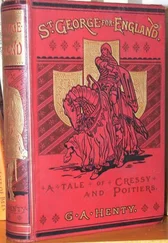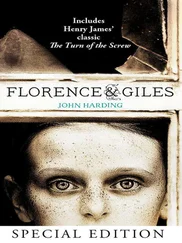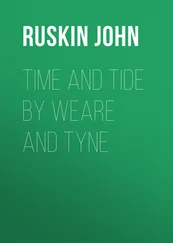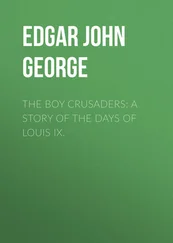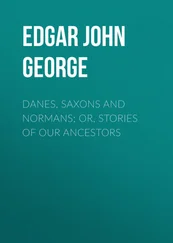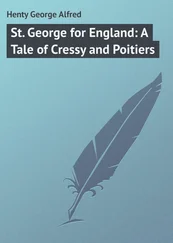John Edgar - Cressy and Poictiers
Здесь есть возможность читать онлайн «John Edgar - Cressy and Poictiers» — ознакомительный отрывок электронной книги совершенно бесплатно, а после прочтения отрывка купить полную версию. В некоторых случаях можно слушать аудио, скачать через торрент в формате fb2 и присутствует краткое содержание. Жанр: foreign_antique, foreign_prose, на английском языке. Описание произведения, (предисловие) а так же отзывы посетителей доступны на портале библиотеки ЛибКат.
- Название:Cressy and Poictiers
- Автор:
- Жанр:
- Год:неизвестен
- ISBN:нет данных
- Рейтинг книги:3 / 5. Голосов: 1
-
Избранное:Добавить в избранное
- Отзывы:
-
Ваша оценка:
- 60
- 1
- 2
- 3
- 4
- 5
Cressy and Poictiers: краткое содержание, описание и аннотация
Предлагаем к чтению аннотацию, описание, краткое содержание или предисловие (зависит от того, что написал сам автор книги «Cressy and Poictiers»). Если вы не нашли необходимую информацию о книге — напишите в комментариях, мы постараемся отыскать её.
Cressy and Poictiers — читать онлайн ознакомительный отрывок
Ниже представлен текст книги, разбитый по страницам. Система сохранения места последней прочитанной страницы, позволяет с удобством читать онлайн бесплатно книгу «Cressy and Poictiers», без необходимости каждый раз заново искать на чём Вы остановились. Поставьте закладку, и сможете в любой момент перейти на страницу, на которой закончили чтение.
Интервал:
Закладка:
John G. Edgar
Cressy and Poictiers / The Story of the Black Prince's Page
Introduction
"Ivanhoe," picturing the days of Richard Cœur de Lion, leapt over all but a couple of centuries to draw upon Froissart. The present romance of Edward the Black Prince's time is well within the barriers of the best of all the romantic chroniclers, and perhaps its chief merit is that it is both historically and romantically an avowed Froissart book. Its author, J. G. Edgar, who was of course not a Walter Scott, wrote and was content to write for "Beeton's Boys' Own Magazine" in its palmy days, between forty and fifty years ago, when its editor had a very distinct idea of bringing English history into holiday range. Edgar was one of his chief contributors, and wrote some capital stories and histories, of which three or four are still in favour, and this story of "Cressy and Poictiers" is the best of them.
Edgar, being a minor and not a major romancer, gave less rein to his fantasy than Scott, and kept closer to his originals. He conceived in this story the happy idea of accommodating the Black Prince with an adventurous and vain-glorious page, whom he calls Arthur Winram, who is, as a necessity of fiction, bound to be of nobler birth than that name would seem to say, and to be subject to the wicked designs of those who would keep him from his birthright. Through the eyes of this page are viewed the martial events and pageantry in the career of the Black Prince, leading up to the fields of Creçy and Poictiers, and so to the Prince's death. Thus there are three chief fortunes at stake: that of the page and hero, that of the Black Prince, and that of England herself.
If you turn from the romance to the actual story of the Black Prince, as it is told by the historians, you will find the details in which Edgar differs from them are either those that are necessarily fictitious, or those that are not very essential. And if you compare his book with Froissart, you will find that once he has got on common ground with the fourteenth-century chronicler, he keeps pretty well on terms with him in the succession of events.
Edgar takes 1328 as the year of his page and hero's birth; and that was a year to "precipitate affairs," as the chroniclers of a later date than Froissart's used to say. In that year Charles of France died, and Philip of Valois was elected by the peers and barons of France to the realm, and so put out the Queen of England, Isabel, daughter of Philip le Beau, who was the next heir.
"Thus," says Froissart, "passed this realm of France out of her right lineage, as it hath been deemed by many." And thus came many wars and dire calamities. And "this is the very foundation of this history, to recount the great enterprises and feats of arms that have fallen: for since the time of Charlemagne there never befell so great adventures."
In the same year – that is, 1328 – King Edward married Philippa of Hainault. "The English chronicle saith this marriage and coronation of the queen was done at York with much honour." In the year following, their first-born child, Edward, afterwards called the Black Prince, blessed this union.
This gives us the year of 1344 (when the Black Prince was fifteen, and his future page a year older) as the natural one for this boyish tale of adventure to open. It was the year when Philip of Valois murdered twelve Breton hostages, and Edward vowed revenge; and this was the time, too, of the revolt in Flanders. In 1345, Jacob von Arteveldt was the victim of the mob. "Poor men first set him high, and evil men slew him," says Froissart. One may compare the romance with the chronicle here to the advantage of the latter. In the eleventh chapter of the story we are at Caen; and Froissart's chronicles give us one or two inimitable story-teller's cues of which hardly sufficient account is made. That little tower at the foot of the bridge, seen at the end of the street, and the one-eyed knight Sir Thomas, who saved the lives of many dames and damosels and cloisterers, as he rode through the town, make one of those medieval pictures, lifelike and minute, which are like little windows into actual history.
Many such episodes fill in the story before we come to the big battle-piece of Creçy. In the preamble, good use is made of the guide, Gobin Agace, who guides the English in the passage of the Somme, at the passage called Blanche Paque. There is no better account anywhere in history and romance than that Froissart gives of Cressy at its most striking moments. It may seem here and there that something of the confusion of the field itself obscures his story; but his strokes are sure and tell-tale as can be desired when the climax comes; and wonderfully he uses the natural effects – the storm, the great rain, the thunder and lightning; and then the ominous flight of crows over both battles; and the sudden bright emergence of the sun, to dazzle the Frenchmen's eyes, and warm the stout backs of the English; and finally the arrow-shot of the English archers, so thick and so concerted, that "it seemed to be snow!" The disastrous failure of the Genoese crossbows in reply we find both in Froissart and in Edgar's pages; and the detail of the King's post, "on a little windmill hill," where he hears that his son, the Prince, is hard pressed, and says: "Let them suffer him this day to win his spurs!" is another famous incident on which the chronicler and the novelist draw alike.
One or two circumstances of the battle are slightly changed in Edgar's page. The strength of the English position on the high ground, upon the right bank of the river, is hardly made so clear as might be. The English are seated on a large plain when first seen by Philip, in the romance. Edgar would have gained by comparing Froissart with other records in picturing this scene. Again, he does not speak of the small cannon that were used at Creçy, though at the siege of Calais they are remembered in his account. Froissart says expressly, however, that small cannon were posted between the archers; and Edward certainly took cannon with him from England. The cannon used in the siege of Calais threw balls of three or four ounces weight.
The Black Prince's page is made a prisoner after Creçy; and the succeeding chain of events is again not quite given its proportionate effect in the romance. However, we have some compensation – the battle of Neville's Cross, which Froissart, by the way, reports to have taken place only three miles from Newcastle-on-Tyne and calls after that famous old town accordingly. Then succeeds the siege of Calais, and its surrender on the 3rd August, 1347. One passage here from Froissart that is not in Edgar is too good for either romance or history to forget. It is where the French herald Sir John returns into the beleaguered town with the message of the English King:
"Then Sir John went unto the market place, and sounded the common bell: then, all incontinent, men and women assembled there, and the captain made report of all he had done, and said, 'Sirs, it will be none otherwise, therefore now take advice, and make a short answer.' Then all the people began to weep and make such sorrow, that there was not so hard a heart, if they had seen them, but that would have had great pity of them; the captain himself wept piteously."
At this surrender of Calais, the question whether the six townsmen came forth with halters round their necks or with ropes in their hands need not disturb the reader. Tradition favours the former, and plain history the latter.
It is at the battle of Poictiers that the real value of Edgar's story as a tributary current leading into the broad stream of history is best to be discovered. One more illustration from Froissart may be given here, because it has to do with an incident which gave Edgar one of his clues. It is that of the scene where the Squire of Picardy, Johan de Helenes, takes the Lord Berkeley, who had been pursuing him.
Читать дальшеИнтервал:
Закладка:
Похожие книги на «Cressy and Poictiers»
Представляем Вашему вниманию похожие книги на «Cressy and Poictiers» списком для выбора. Мы отобрали схожую по названию и смыслу литературу в надежде предоставить читателям больше вариантов отыскать новые, интересные, ещё непрочитанные произведения.
Обсуждение, отзывы о книге «Cressy and Poictiers» и просто собственные мнения читателей. Оставьте ваши комментарии, напишите, что Вы думаете о произведении, его смысле или главных героях. Укажите что конкретно понравилось, а что нет, и почему Вы так считаете.

